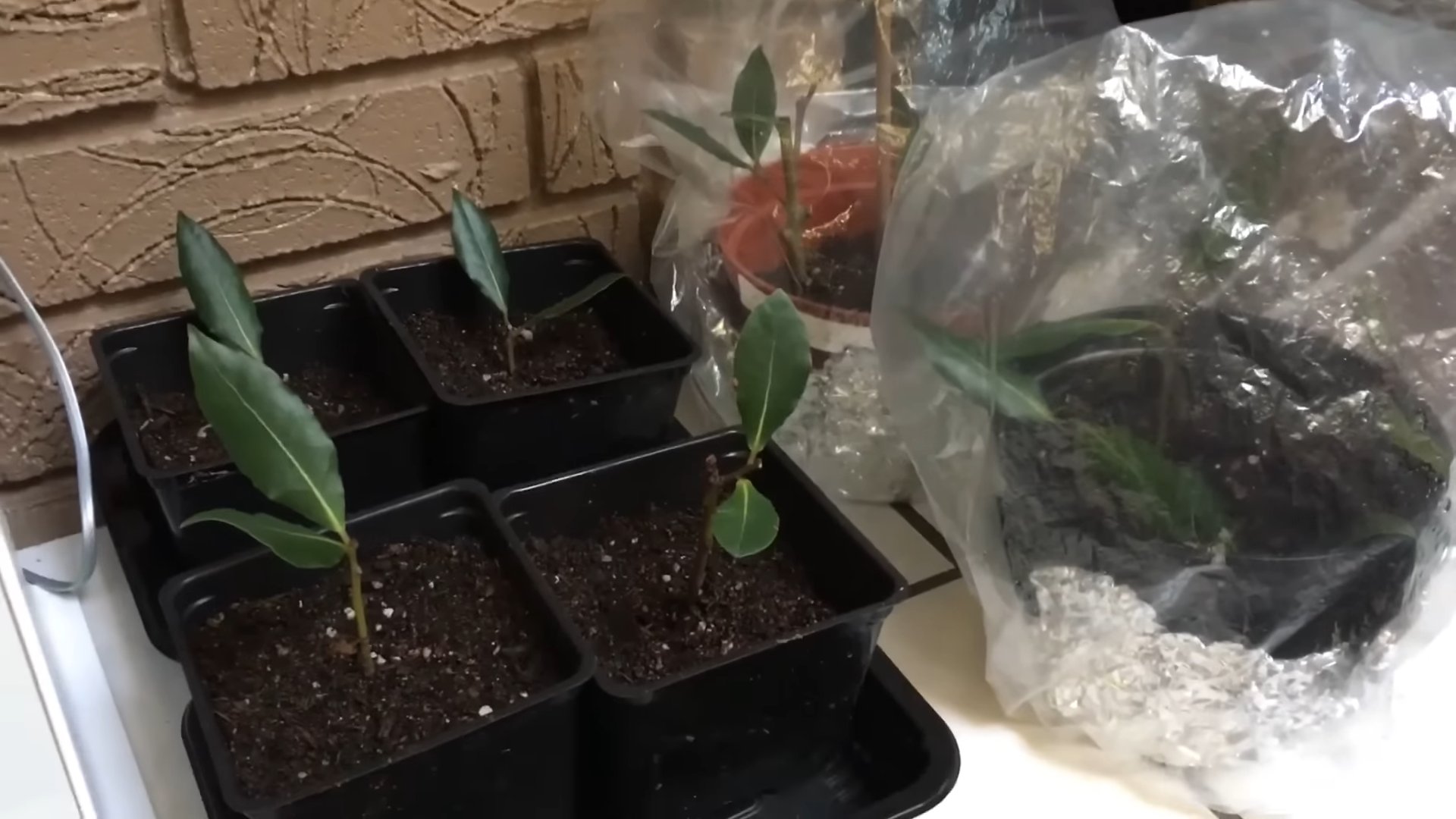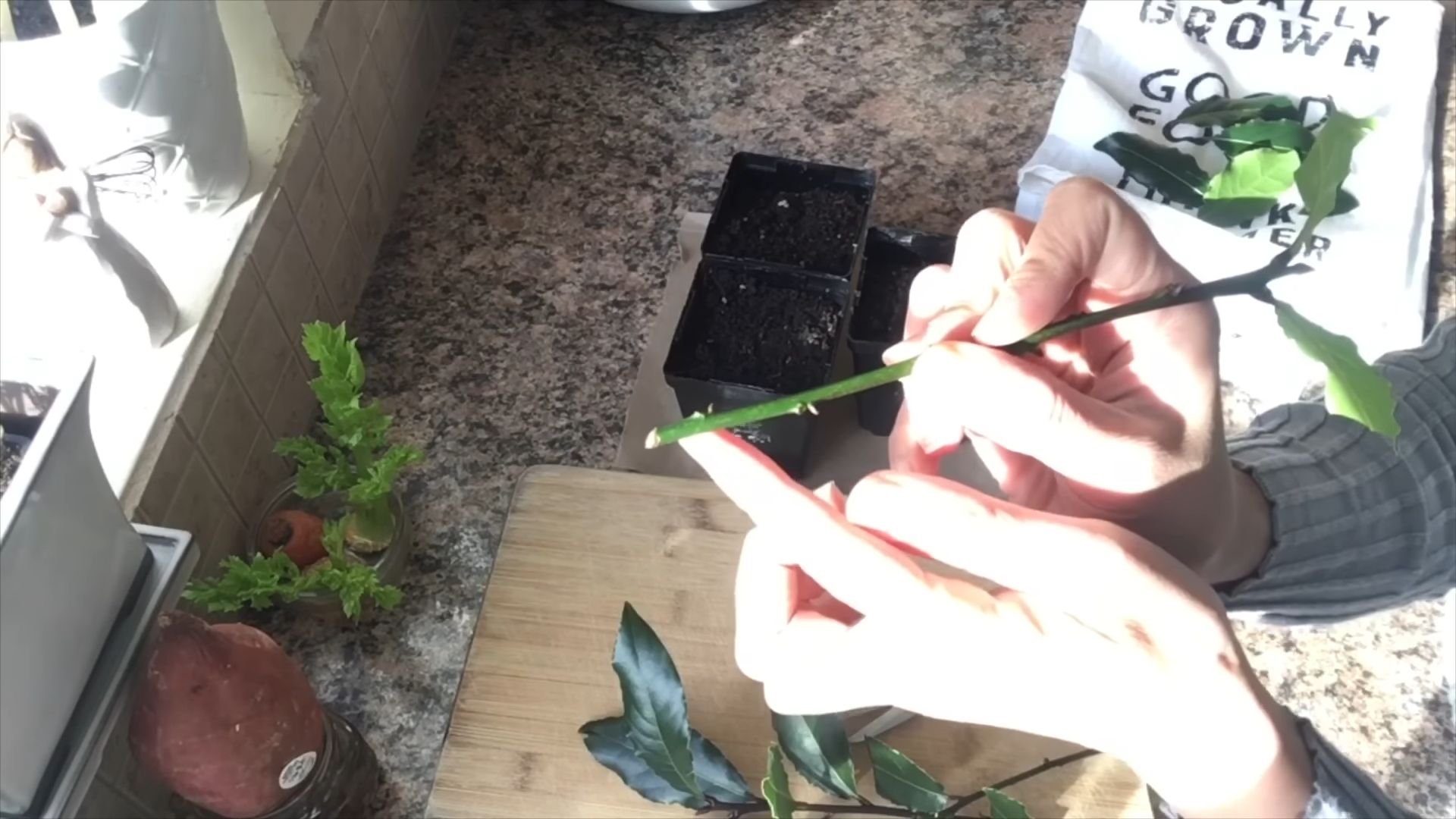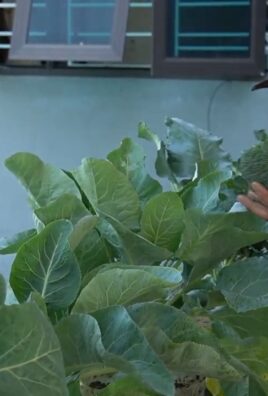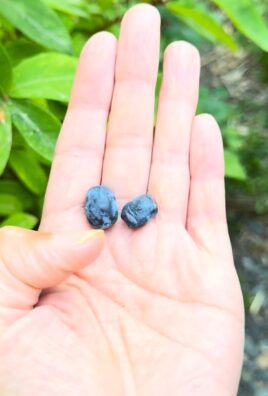Propagate Bay Leaf Cuttings: Unlock the secrets to multiplying your own fragrant bay laurel tree! Have you ever wished you could have an endless supply of fresh bay leaves for your culinary creations? Imagine never having to buy dried bay leaves again, and instead, harvesting them straight from your own garden. This DIY guide will show you exactly how to propagate bay leaf cuttings, turning one plant into many, and filling your garden (and your kitchen) with the delightful aroma of bay.
Bay laurel, or Laurus nobilis, has a rich history, dating back to ancient Greece and Rome, where it was a symbol of victory and honor. Woven into wreaths, bay leaves adorned the heads of heroes and emperors. Today, while we might not be crowning victors with them, the bay leaf remains a culinary staple, adding depth and complexity to soups, stews, and sauces. But beyond its culinary uses, growing your own bay laurel is incredibly rewarding, connecting you to a tradition that spans millennia.
Why should you learn to propagate bay leaf cuttings? Well, buying mature bay laurel trees can be expensive. Plus, propagating from cuttings allows you to create clones of your favorite plant, ensuring you maintain its specific characteristics and flavor profile. I’m going to show you how easy and cost-effective it is to expand your bay laurel collection. Whether you’re a seasoned gardener or just starting out, this step-by-step guide will empower you to successfully propagate bay leaf cuttings and enjoy the benefits of this versatile and aromatic plant for years to come. Let’s get started!

Propagating Bay Leaf Cuttings: A Gardener’s Guide
Hey there, fellow plant enthusiasts! I’m so excited to share my tried-and-true method for propagating bay leaf cuttings. If you’re like me, you adore the aromatic leaves of the bay laurel ( *Laurus nobilis* ) and dream of having a whole grove of them. Well, propagating from cuttings is a fantastic and cost-effective way to expand your bay leaf collection. It might seem a little daunting at first, but trust me, with a little patience and these simple steps, you’ll be well on your way to bay leaf abundance!
What You’ll Need
Before we dive in, let’s gather our supplies. Having everything ready beforehand will make the process smooth and enjoyable. Here’s what you’ll need:
* Healthy Bay Leaf Plant: This is your source! Choose a mature, healthy bay leaf plant that you know is thriving. Look for vigorous growth and no signs of disease or pests.
* Sharp, Clean Pruning Shears or Knife: Sterilize your cutting tools with rubbing alcohol to prevent the spread of diseases. A clean cut is crucial for successful rooting.
* Rooting Hormone (Optional but Recommended): Rooting hormone encourages faster and more reliable root development. I personally prefer using a powder form, but liquid works too.
* Rooting Medium: A well-draining rooting medium is essential. I’ve had great success with a mix of perlite and peat moss (or coco coir as a sustainable alternative) in equal parts. You can also use a commercial seed starting mix.
* Small Pots or Containers: Choose pots that are about 2-3 inches in diameter. Make sure they have drainage holes!
* Clear Plastic Bag or Humidity Dome: This will help create a humid environment, which is vital for successful rooting.
* Spray Bottle with Water: For misting the cuttings to keep them hydrated.
* Warm, Bright Location (Indirect Sunlight): Avoid direct sunlight, which can scorch the cuttings.
* Labels: To keep track of your cuttings and their progress.
Taking the Cuttings
The timing of taking cuttings can influence your success rate. I’ve found that late spring or early summer is generally the best time, when the plant is actively growing.
1. Select Healthy Stems: Look for semi-hardwood stems. These are stems that are neither too soft and green (new growth) nor too woody and brown (old growth). They should be flexible but not flimsy.
2. Make the Cut: Using your sterilized pruning shears or knife, cut a 4-6 inch section from the tip of the stem. Make the cut at a 45-degree angle just below a leaf node (the point where a leaf grows from the stem). This angle increases the surface area for root development.
3. Remove Lower Leaves: Carefully remove the leaves from the bottom 1-2 inches of the cutting. This prevents the leaves from rotting when they’re buried in the rooting medium and encourages root growth.
4. Prepare the Cutting: If you’re using rooting hormone, moisten the cut end of the stem slightly and dip it into the rooting hormone powder. Tap off any excess powder. If you’re using liquid rooting hormone, follow the instructions on the product label.
Planting the Cuttings
Now that we have our prepared cuttings, it’s time to get them planted!
1. Prepare the Pots: Fill your small pots with the rooting medium. Moisten the medium thoroughly, but don’t let it become waterlogged.
2. Make a Hole: Use a pencil or your finger to create a hole in the center of the rooting medium, deep enough to accommodate the bottom 1-2 inches of the cutting.
3. Insert the Cutting: Gently insert the cutting into the hole, making sure the bottom leaves are above the soil line.
4. Firm the Soil: Gently firm the rooting medium around the cutting to provide support.
5. Water Gently: Water the cutting lightly to settle the soil.
Creating a Humid Environment
Bay leaf cuttings need a humid environment to prevent them from drying out before they can develop roots.
1. Cover with Plastic Bag or Humidity Dome: Place a clear plastic bag over the pot, making sure the bag doesn’t touch the leaves. You can use skewers or chopsticks to prop up the bag if needed. Alternatively, use a humidity dome if you have one.
2. Misting: Mist the cuttings with water every day or every other day to keep them hydrated.
3. Ventilation: Open the bag or dome for a few minutes every day to allow for air circulation and prevent fungal growth.
Caring for the Cuttings
Patience is key during this stage! It can take several weeks or even months for the cuttings to develop roots.
1. Location: Place the pots in a warm, bright location that receives indirect sunlight. Avoid direct sunlight, which can scorch the cuttings.
2. Watering: Keep the rooting medium consistently moist, but not waterlogged. Check the moisture level regularly and water when the top inch of the medium feels dry.
3. Monitoring: Check the cuttings regularly for signs of root development. You can gently tug on the cutting to see if it resists. If it does, it likely has roots! You can also gently remove a cutting from the pot to check for root growth, but be careful not to damage any developing roots.
4. Fertilizing: Avoid fertilizing the cuttings until they have developed a good root system.
Transplanting the Rooted Cuttings
Once your cuttings have developed a healthy root system, it’s time to transplant them into larger pots.
1. Choose a Pot: Select a pot that is a few inches larger in diameter than the current pot. Make sure it has drainage holes.
2. Prepare the Potting Mix: Use a well-draining potting mix that is suitable for bay leaf plants. A mix of potting soil, perlite, and compost is a good option.
3. Remove the Cutting: Gently remove the rooted cutting from its current pot. Be careful not to damage the roots.
4. Plant the Cutting: Place the cutting in the new pot and fill it with potting mix. Firm the soil around the cutting.
5. Water Thoroughly: Water the newly transplanted cutting thoroughly to settle the soil.
6. Location: Place the pot in a location that receives bright, indirect sunlight.
7. Care: Water the plant regularly, allowing the soil to dry out slightly between waterings. Fertilize the plant every few weeks during the growing season with a balanced fertilizer.
Troubleshooting
Sometimes, things don’t go as planned. Here are some common problems you might encounter and how to address them:
* Cuttings Rotting: This is usually caused by overwatering or poor drainage. Make sure the rooting medium is well-draining and avoid overwatering. Remove any rotting cuttings immediately to prevent the spread of disease.
* Cuttings Drying Out: This is usually caused by low humidity. Make sure the cuttings are covered with a plastic bag or humidity dome and mist them regularly.
* No Root Development: This can be caused by a variety of factors, including poor cutting technique, low humidity, or lack of rooting hormone. Make sure you’re taking cuttings from healthy stems, using a sharp, clean cutting tool, and providing a humid environment. Using rooting hormone can also improve your success rate.
* Fungal Growth: This can occur in humid environments. Make sure to ventilate the cuttings regularly to allow for air circulation. You can also use a fungicide if necessary.
Final Thoughts
Propagating bay leaf cuttings is a rewarding experience that allows you to expand your bay leaf collection and enjoy the fresh, aromatic leaves for years to come. Don’t be discouraged if your first attempt isn’t successful. Keep practicing, and you’ll eventually get the hang of it. Happy gardening!

Conclusion
So, there you have it! Propagating bay leaf cuttings might seem a little daunting at first, but with a little patience and the right approach, you can easily expand your bay leaf collection without spending a fortune at the nursery. This DIY trick is a must-try for any herb enthusiast, offering a sustainable and rewarding way to cultivate your own fresh bay leaves for years to come. Imagine the satisfaction of seasoning your favorite dishes with bay leaves grown from cuttings you nurtured yourself!
Why is this method so compelling? Firstly, it’s incredibly cost-effective. Instead of repeatedly buying bay leaf plants, you can create new ones from existing growth. Secondly, it allows you to preserve specific traits of a particularly vigorous or flavorful bay leaf plant you already own. You know you’re getting a plant with the characteristics you love. Finally, it’s a fantastic way to connect with nature and learn more about the fascinating process of plant propagation.
Don’t be afraid to experiment with variations! While we’ve outlined a successful method, you can try different rooting hormones or soil mixtures to see what works best for you. Some gardeners have had success using perlite or vermiculite as a rooting medium, while others swear by specific brands of rooting hormone. You could also try propagating bay leaf cuttings in water, although this method generally has a lower success rate than using soil.
Consider the size of your cuttings as well. While the recommended size is 4-6 inches, you might find that slightly larger or smaller cuttings work better in your specific environment. Just be sure to remove the lower leaves to prevent rotting and ensure that the cutting has enough energy to focus on root development.
Another variation to consider is the timing of your propagation efforts. While spring and summer are generally considered the best times to propagate bay leaf cuttings, you can try propagating them at other times of the year as well, especially if you have access to a greenhouse or indoor growing setup. Just be sure to provide adequate warmth and humidity to encourage root development.
Ultimately, the best way to learn is by doing. So, gather your supplies, select your cuttings, and give this DIY trick a try. We’re confident that you’ll be pleasantly surprised by the results.
We encourage you to share your experiences with propagating bay leaf cuttings! Let us know in the comments below what worked for you, what challenges you encountered, and any tips or tricks you discovered along the way. Your feedback will help other gardeners succeed in their own propagation efforts and contribute to a thriving community of bay leaf enthusiasts. Happy propagating!
Frequently Asked Questions (FAQ)
What is the best time of year to propagate bay leaf cuttings?
The ideal time to propagate bay leaf cuttings is during the spring or early summer. This is when the plant is actively growing, and the cuttings are more likely to root successfully. The warmer temperatures and longer daylight hours provide optimal conditions for root development. However, with proper care and environmental control (such as a greenhouse or indoor grow lights), you can attempt propagation at other times of the year, although success rates may vary.
What kind of rooting hormone should I use?
A rooting hormone containing indole-3-butyric acid (IBA) is generally recommended for propagating bay leaf cuttings. IBA is a synthetic auxin that promotes root development. You can find rooting hormones in powder or liquid form at most garden centers. Follow the instructions on the product label for proper application. While not strictly necessary, using a rooting hormone significantly increases the chances of successful rooting. Some gardeners have also had success using natural rooting alternatives like willow water, although these may be less effective than commercial rooting hormones.
How long does it take for bay leaf cuttings to root?
It typically takes 4-8 weeks for bay leaf cuttings to root. However, the exact time can vary depending on factors such as the time of year, the temperature, the humidity, and the specific rooting medium used. Be patient and avoid disturbing the cuttings too much during this time. You can gently tug on the cuttings after a few weeks to check for resistance, which indicates that roots have begun to form.
What kind of soil should I use for propagating bay leaf cuttings?
A well-draining potting mix is essential for propagating bay leaf cuttings. A mixture of peat moss, perlite, and vermiculite is a good option. This type of mix provides good aeration and drainage, which helps to prevent root rot. You can also use a commercially available seed starting mix. Avoid using garden soil, as it can be too heavy and may contain pathogens that can harm the cuttings.
How often should I water the cuttings?
Keep the soil consistently moist, but not waterlogged. Water the cuttings when the top inch of soil feels dry to the touch. Avoid overwatering, as this can lead to root rot. You can also mist the cuttings regularly to increase humidity, which helps to prevent them from drying out. Using a humidity dome or placing the cuttings in a plastic bag can also help to maintain high humidity levels.
What kind of light do the cuttings need?
Bay leaf cuttings need bright, indirect light. Avoid placing them in direct sunlight, as this can scorch the leaves. A location near a window that receives morning sun or filtered light is ideal. If you don’t have access to natural light, you can use grow lights to provide supplemental lighting.
How do I know if the cuttings have rooted?
The best way to tell if the cuttings have rooted is to gently tug on them. If you feel resistance, it means that roots have formed. You can also carefully remove a cutting from the soil and inspect the roots. Look for small, white roots emerging from the base of the cutting.
What do I do after the cuttings have rooted?
Once the cuttings have rooted, you can transplant them into individual pots filled with a well-draining potting mix. Gradually acclimate the young plants to outdoor conditions before planting them in the garden. Start by placing them in a sheltered location for a few hours each day, gradually increasing the amount of time they spend outdoors.
Can I propagate bay leaf cuttings in water?
While it is possible to propagate bay leaf cuttings in water, it is generally less successful than propagating them in soil. Cuttings propagated in water tend to develop weaker roots and are more susceptible to transplant shock. If you choose to propagate in water, be sure to change the water regularly and add a rooting hormone to the water.
My bay leaf cuttings are turning yellow or brown. What should I do?
Yellowing or browning leaves can be a sign of several problems, such as overwatering, underwatering, or lack of nutrients. Check the soil moisture and adjust your watering accordingly. If the soil is consistently wet, allow it to dry out slightly before watering again. If the soil is dry, water the cuttings thoroughly. You can also try fertilizing the cuttings with a diluted liquid fertilizer. If the problem persists, the cuttings may be infected with a fungal disease. In this case, you may need to treat them with a fungicide.




Leave a Comment